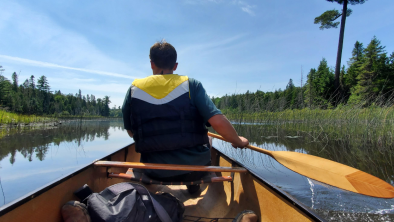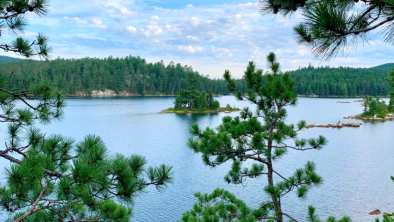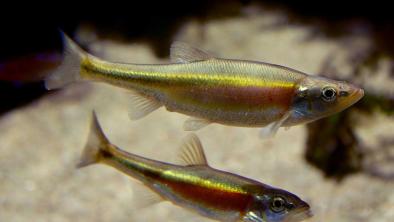Minister rejects protection for Catchacoma forest
The Peterborough Examiner

Against a backdrop of severe criticism of recent Ontario government cuts to wetland protection in Bill 23 and a proposal to sacrifice Greenbelt lands to benefit big developers, Environment Minister David Piccini has quietly passed up a golden opportunity in Peterborough County to demonstrate Ontario cares about nature conservation.
In one sentence in a letter dated Nov. 25, the Ministry of Environment, Conservation and Parks (MECP) rejected a request from the community-led Catchacoma Forest Stewardship Committee (CFSC) to support a process to consider protected status for a 662 ha old growth forest on crown land known as Catchacoma Forest, located in the Kawartha Highlands.
No rationale given
Despite reams of ecological data shared with the Ministry by the CFSC over years, and multiple requests to meet with the minister, the rejection letter offered absolutely no rationale for the decision. It did not address the many scientific reports from studies by non-profit group Ancient Forest Exploration & Research (AFER) outlining the natural heritage, biodiversity (over 700 species documented so far!) and carbon storage values of the Catchacoma Forest, nor the hundreds of letters of support from individuals and groups, including the municipality of Trent Lakes, for the educational, recreational and health benefits of protecting this rare yet accessible ecosystem.
It certainly made no mention of the dozens of well-attended public hikes and educational excursions with high school and elementary students led by the Committee in this beautiful forest.
This failure to respond seriously to a citizen-initiated and ecology-backed proposal to protect a public forest reveals a disturbing dismissiveness of both science and democracy on the part of MECP. It also leaves thousands of old growth trees and the life they sustain at the mercy of commercial logging, as is the default state of most unprotected crown land.
Piccini has for the most part dodged or defended the Ford government’s disregard for the environment, hiding behind misleading narratives about housing and touting the party line of “cutting red tape” to keep the province “open for business.”
But for those of us who take an interest in addressing the twin crises of climate change and biodiversity loss, business as usual doesn’t cut it. And it shouldn't cut it for the provincial agency tasked to “protect Ontario’s air, land, water, species at risk and their habitats” and “tackle climate change” — to borrow language from MECP’s own website.
COP 15
As I write this, the world is gathering in Montreal for the 15th Conference of the Parties (COP 15) of the United Nations Convention on Biological Diversity. This is the largest international biodiversity summit in more than a decade. Similar to the more well-known climate gatherings, countries are aiming to adopt a global agreement-called the Global Biodiversity Framework — for “living in harmony with nature.”
Increasing the quantity (and quality) of protected ecosystems worldwide is a key part of the framework, and the Canadian government has already pledged to protect 30 per cent of lands, waters, and oceans by 2030. This will be nearly impossible without the co-operation of provinces, territories and First Nations. And so, as with most things environmental, we must think global and act local.
Ontario lags behind
Less than 11 per cent of Ontario lands are currently protected. We are lagging behind B.C., Quebec, Alberta, Nova Scotia, the Yukon, Northwest Territories and Manitoba. This percentage has barely budged in over a decade and the province has not set any targets for growing it.
Yet the letter that rejected protecting Catchacoma Forest proclaimed that the “Ministry of the Environment, Conservation and Parks is committed to its role in the protection of Ontario’s vast natural environments.” It cited a couple of examples of projects in the works, one of which was a recent designation of Alfred’s bog southeast of Ottawa as a “nonoperating provincial park.”
While this peat bog is certainly worthy of protection as a recognized class one wetland and already under the care of the Nature Conservancy of Canada, it was essentially already protected. It seems that the Minister is taking credit for the work of others. And at 3,000 hectares it is a drop in the bucket.
For context, to grow Ontario’s protected places by one per cent would take the addition of over one million hectares of land. This is not impossible. The province of Quebec grew protected areas by over 5 per cent in the span of just seven years, through a concerted effort and allocation of resources.
Clearly, MECP has a lot of work to do to live up to its mandate to grow protected places. Catchacoma Old Growth Forest is such low-hanging fruit, with so many conservation values, that the ministry’s stonewall is baffling. The black box in which MECP locks its decision-making process on land protection should be of concern to all Ontario residents. A democratic and evidence-based plan to meet the urgent needs for nature conservation is desperately lacking.
The fight continues
The Catchacoma Forest Stewardship Committee will continue to seek protection for Catchacoma Forest and to hold the Minister accountable. We will continue to seek the answers about decision-making and a meeting with decision-makers we never got.
We will continue to introduce local residents and school classes to the stunning beauty and biodiversity of the Catchacoma Forest and we will continue to support the research of AFER to document the forest. We encourage all people to write to Piccini to encourage the minister to rethink the decision to reject protection for this old-growth gem so close to home. His email address is minister.mecp@ontario.ca
For more information, please check out the documentary “Conserving Catchacoma” https://www.wildernesscommittee.org/news/conserving-catchacoma-document…
You can find AFER’s scientific reports on Catchacoma Forest at https://www.peterborougholdgrowth.ca/catchacoma-old-growth-forest
About the CFSC
The Catchacoma Forest Stewardship Committee was formed in 2020 by scientists, educators, residents and environmental advocates to pursue protection for Catchacoma Forest after it was identified by old growth specialists as perhaps the largest mature and old growth eastern hemlock forest in the country.
The CFSC has held numerous public hikes and events highlighting the conservation values of the Forest and participated in consultations to successfully achieve a temporary suspension of logging.
The CFSC acknowledges that the Catchacoma Forest is on unceded crown land that is the traditional territory of the Michi Saagiig First Nations. We welcome any and all input from these Nations on the management of Catchacoma Forest.


